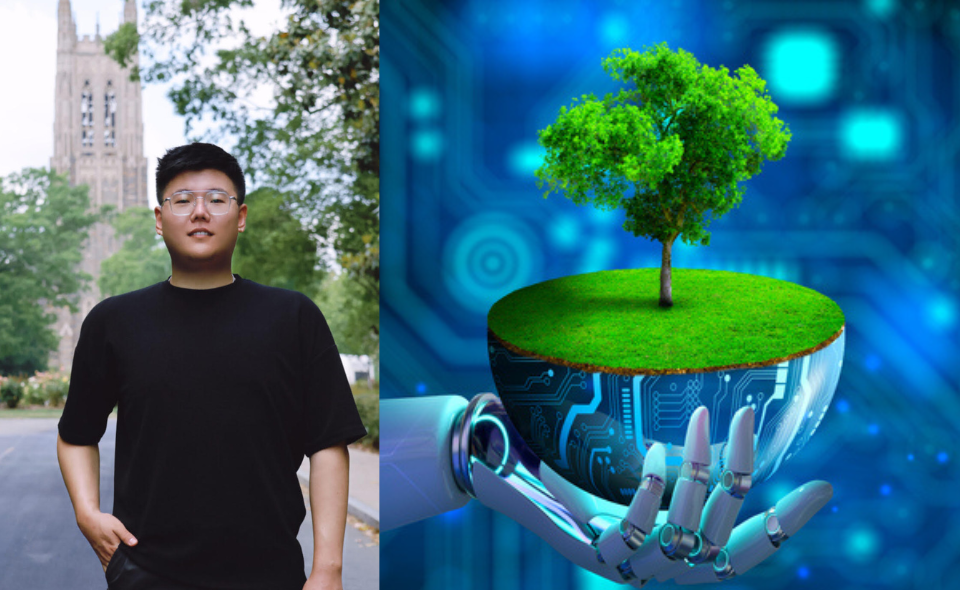

As climate change accelerates and extreme weather events grow more unpredictable, scientists are turning to artificial intelligence to make sense of Earth’s complex and shifting systems. This convergence of climate science and machine learning is opening new pathways for understanding – and predicting – the planet’s climate future. At Columbia University’s Data Science Institute, postdoctoral researcher Dr. Shuolin (Shawn) Li is part of a new generation of scholars blending traditional environmental modeling with cutting-edge AI. The goal is to create models that can learn from new data to better simulate and respond to the planet’s changing conditions.
My goal is to help develop a new generation of computational tools that can enhance the accuracy and usefulness of climate projections.
– Shuolin (Shawn) LiLearning the Earth with AI and Physics
As an Institute Postdoctoral Fellow, Li works under the mentorship of Pierre Gentine, Maurice Ewing and J. Lamar Worzel Professor of Geophysics and Professor of Earth and Environmental Sciences, Tian Zheng, Professor of Statistics and Department Chair, and Upmanu Lall, Alan and Carol Silberstein Professor of Engineering and Director of the Columbia Water Center. In collaboration with Professors Gentine and Zheng, Li leads the New Data Assimilation research project at Columbia’s Learning the Earth with AI and Physics (LEAP) Research Center, whose mission is to improve climate projections by uniting the strengths of machine learning and physical modeling. LEAP’s approach is to leverage AI to uncover patterns in vast, complex climate datasets, while embedding the physical laws and causal mechanisms of climate science into their algorithms. Li works to develop smarter, more adaptive climate models by merging real-world observations, physics-based climate models, and data-driven machine learning techniques. “My goal is to help develop a new generation of computational tools that can enhance the accuracy and usefulness of climate projections,” Li explains.
AI and Engineering for Ecosystem Resilience
One of Li’s projects merges AI with physics to give engineers and environmental scientists better tools for predicting sediment movement and erosion, which is vital for protecting river ecosystems and infrastructure. For this project, Li and his team use a physics informed ML framework to better understand how sediment moves through vegetated waterways and around structures like bridge piers. Their model integrates physical laws with real-world data to simulate how turbulent water flow influences sediment dispersion – insights that are important for river channel protection and infrastructure resilience. A paper on this work was published in the October 2024 issue of Geophysical Research Letters.

A New Framework for Long-Term Climate Predictions
In another line of research, Li is working to improve the reliability of long-term climate models. Unlike weather forecasts, which predict specific conditions over short timeframes, climate models aim to understand broader trends over decades – such as changes in average temperature, rainfall patterns, or the frequency of extreme events. Where traditional weather models use ML for short-term, trajectory-based predictions, climate models emphasize statistical patterns and long-term dynamics. Li and his colleagues have developed a new framework that incorporates uncertainty directly into the ML model parameters – an essential step for more robust climate projections. Their tool estimates the probability distributions of different temperature states without needing to simulate every day individually. By integrating uncertainty into the model’s parameters, Li and his team were able to generate more reliable forecasts and estimate the likelihood of extreme weather events with greater confidence.
The Chapter Ahead
”I was drawn to Columbia’s expertise at the intersection of AI and environmental modeling, ” Li says, “and my experience has been fantastic. I’ve been mentored by leaders in the field, and engaged in collaborations with brilliant, supportive colleagues. I’m grateful for the exposure to diverse ideas and perspectives – from students, faculty, and fellow researchers.” Currently on the job market, Li is interested in positions in academia and industry. “I find teaching to be very rewarding,” Li notes. “It’s an opportunity to share knowledge with a broader audience and help others see the value and impact of the work we do. And I’m excited to continue working on creating innovative and impactful tools for climate science.”